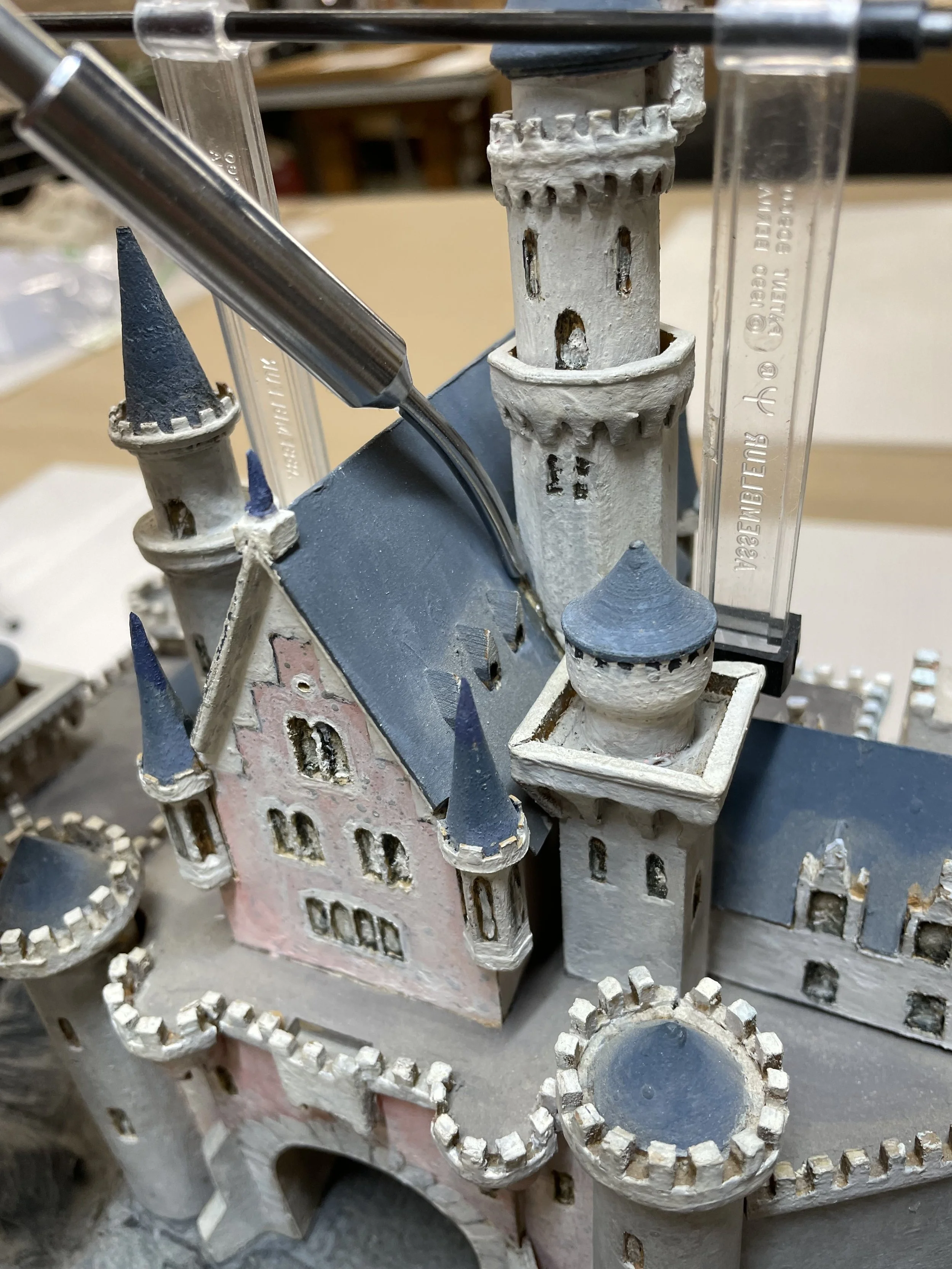Long before the Sleeping Beauty Castle opened its drawbridge to the public, it took shape on a workbench. Crafted in 1953, this architectural model reflects the earliest iterations of Disneyland’s most iconic structure: a castle that would soon become the visual and visceral centerpiece of the park.
Watch Josh McCauley — our senior conservator of objects and frames — treat the castle in the video below, and then scroll to learn more about the project:
Sleeping Beauty is a classic fairy tale about a princess cursed to sleep for 100 years, until awakened by a prince’s kiss. The story, popularized by Charles Perrault, the Brothers Grimm, and Disney’s 1959 animated film, became the inspiration for Sleeping Beauty Castle—the iconic centerpiece of Disneyland and a symbol of fantasy and imagination worldwide.
The Sleeping Beauty, John Maler Collier, 1921
When this model was created, Marvin Davis, a trained architect and Hollywood art director, had just been hired by WED Enterprises (now Walt Disney Imagineering) to help bring Walt’s idea of a “theme park” into focus. Davis developed dozens of versions of the master plan, experimenting with layout, sightlines, and a central gathering place that would draw visitors in. That central structure -- what would become Sleeping Beauty Castle -- was refined through sketches and small-scale models.
Sleeping Beauty Castle, Disneyland, 1955
To bring Davis’s drawings into three dimensions, Walt turned to model builder Fred Joerger, one of the original Imagineers. Joerger tested proportions and placements through a series of handmade maquettes, moving turrets, shifting spires, and adjusting scale until the silhouette felt just right. As fellow model maker Harriet Burns recalled, Walt preferred the version with the blue roof because it seemed to disappear into the sky, making the castle appear taller.
The model prior to treatment.
This particular model is made from painted paper ply board, paper mâché, and wood, and sits on top a black-painted plinth with a brass label. Over time, the piece sustained wear typical of display and age: several towers had separated, battlements were missing or damaged, and the spires showed evidence of previous overpainting. The mount exhibited cracking, losses, and adhesive residue, and the entire surface was coated in a thick layer of dust.
The model during treatment.
Conservation efforts focused on careful stabilization and aesthetic reintegration. Detached towers were resecured, battlements were reconstructed with balsa wood, and areas of loss were inpainted using conservation-grade reversible pigments. Surface dirt and dust was reduced using gentle surface cleaning methods, and the wooden base was repaired and toned to reestablish a unified appearance.
The model during treatment.
Now conserved for future generations, the model offers a rare glimpse at the evolution of an icon. It’s a testament not only to Walt Disney’s vision, but also to the hands-on process of imagining something bold, fantastical, and entirely new.
The model after treatment.
The model after treatment.








